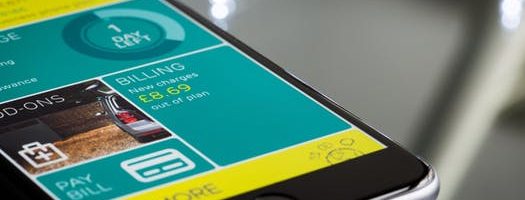Bring Your Own Device (BYOD) began as a corporate model and has recently begun making waves in the clinical trial industry. The advantage of employing the approach is primarily in upfront cost savings. From this vantage point, it’s as if all expenses related to sourcing, provisioning, and deploying devices can be avoided. Unfortunately, the level of control over these devices greatly decreases under the BYOD approach and leads to exponential financial loss down the long road of a complex clinical trial.
According to Nucleus Research, “The hard ROI of BYOD is being confused by feel-good claims around productivity and vendor proclamations that lack a financial foundation.” It’s easy to make assumptions about cost savings when the first major purchase is reduced, but the resulting maintenance costs negate the initial benefits. Here are five hidden costs of the BYOD approach in clinical trials:
1. Higher cost of individual purchasing. While it may seem cost effective to push the burden of purchase on to the individual participating in the clinical trial, this method forces the pharmaceutical sponsor to lose bulk purchasing discounts. Even if patients are supplying their own devices, they still need to be reimbursed for all costs they’ve incurred throughout the trial. Furthermore, the likelihood of every patient in the trial having a proper phone is thin, meaning that at the very least, there will be some level of flexible provisioning required and the sponsor or CRO will need to purchase enough devices to fill in the gaps. By cutting the number of those provisioned devices, the buyer would lose any benefits attached to high volume bulk purchases, as well as benefits that extend past the hardware and can be applied to software and carrier charges.
2. High BYOD software costs from individual license purchases. Telecommunications costs rise because companies lose the traditional volume discounts they would normally have received with the carrier or software they’d chosen. Because of this, the preferred method of BYOD is to have the individual purchase an app from the app store of their respective phone. This might seem like a positive but the patients still need to be reimbursed. According to a checklist by Lenovo regarding the Hidden Costs of Users Providing Their Own IT, “These applications are generally purchased on a one-off basis by individual users, resulting in the organization paying list price for them… As a result, an organization with tremendous buying power is effectively paying retail.”
3. Higher costs of maintenance and tech support. When patients experience technical issues, they will call the trial IT department for assistance. This is fine if IT knows exactly what device they’re dealing with and if they have full control over the network and software of the hardware involved. BYOD means that the job of IT support becomes far more complicated than it needs to be and the risk of losing data increases. It also leads to frustrated patients when they can’t receive simple solutions to their IT issues.
4. Cost of tracking personal devices and activities for compliance. For small scale trials, it might be logical to work something into the patient contract ensuring that they’ll use their own device within the parameters of the trial. The main concern here is ensuring they record data whenever it is required, even though they can disable the alarms and notifications set by trial software. With a large-scale phase III trial involving thousands of patients and multiple locations, this honor system approach isn’t feasible. The cost of asset tagging and device identification for patient-owned devices can be extensive, but necessary, to keep track of the hardware recording and storing essential clinical data. Furthermore, consumer phones are often updated yearly meaning that the trial sponsors/CROs need to ensure that any data on an old device is not lost when the patient upgrades.
5. Cost of data backup/recovery. The greatest financial loss experienced by any sponsor or CRO is when the years of time, research, and money are wasted because the trial was ultimately unsuccessful and the tested drug or biotechnology can’t make it to the market for sale. Therefore, the integrity of clinical data is crucial. Every device must be backed up to ensure that the data cannot be lost; unfortunately, the BYOD approach complicates this quite a bit. From a business standpoint, centralized data backup is far more manageable than tracking thousands of individually monitored phones. Legalities come into play when each patient must give consent for their phone’s data to be accessed by the trial runners. Even with permission, however, the IT department trying to manage such a large amount of data on so many different platforms can be disastrous.
Regarding products used directly by patients, the need for authenticity is key. Proper data collection is the only sure way to get accurate clinical trial results. As we’ve pointed out in a previous post, the BYOD model is better suited for small scale trials with minimal participants. This format allows for closely monitored devices making the varying factors easier to control. In large scale trials, however, the high number of devices and the variances in carrier/software installations and IT support make the provisioned devices the ideal approach.
